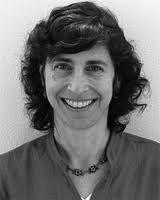 The Jewish community recently marked a sad day on the Jewish calendar called Tisha B’Av. It’s a day of mourning for the destruction of the two Temples in Jerusalem, first in 586 BCE by the Babylonians and then again in 70 CE by the Romans, as well as other Jewish tragedies throughout history. Jewish tradition teaches that these major catastrophes were so significant that they require a day of fasting and mourning built into the annual calendar.
The Jewish community recently marked a sad day on the Jewish calendar called Tisha B’Av. It’s a day of mourning for the destruction of the two Temples in Jerusalem, first in 586 BCE by the Babylonians and then again in 70 CE by the Romans, as well as other Jewish tragedies throughout history. Jewish tradition teaches that these major catastrophes were so significant that they require a day of fasting and mourning built into the annual calendar.
What comes next after this catastrophe and the mourning of Tisha B’Av? What do any of us need on “the day after” mourning a catastrophic event in our lives?
The Sabbath following Tisha B’Av is known as the “Sabbath of Consolation.” The next seven weeks, until Rosh HaShanah, there are special prophetic readings of consolation during each Sabbath service. These weeks are filled with opportunities for self-reflection in preparation for the High Holiday cycle. Rosh HaShanah and Yom Kippur focus on making space for the inner changes that allow us to move forward. The Jewish fall holiday cycle ends with Sukkot, a holiday of joy and hope.
At JFS we do our best to help prevent situations that are devastating for people. Sometimes, however, catastrophic events happen in peoples’ lives. The question then is: What’s next? The Jewish holiday cycle that follows the catastrophe remembered by Tisha B’Av is instructive. Following the mourning, there is consolation, reflection, inner change and, eventually, the potential for a time of great joy.
Many of us experience very difficult moments in our lives. May this model help us move forward in a way that allows for the possibility for healing and joy.
If you or someone you love could use some extra support in the wake of a difficult life event, JFS is available. Call us at 206-726 -3624.
By Beth Huppin
Beth is the Director of JFS Project Kavod/Dignity, the Jewish Education program at JFS. She has enjoyed teaching Judaica to children and adults of all ages in both formal and informal settings for over 30 years.




